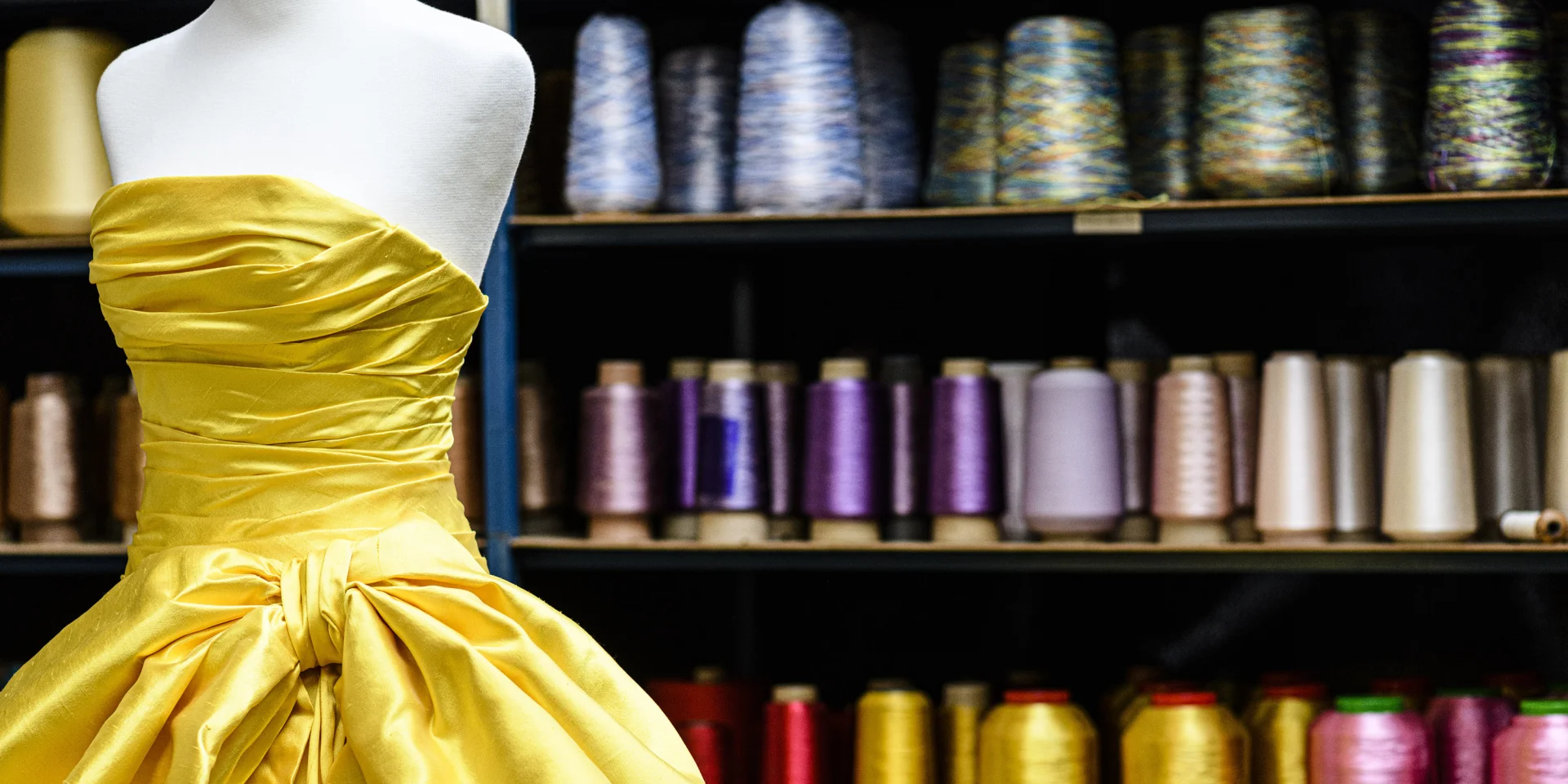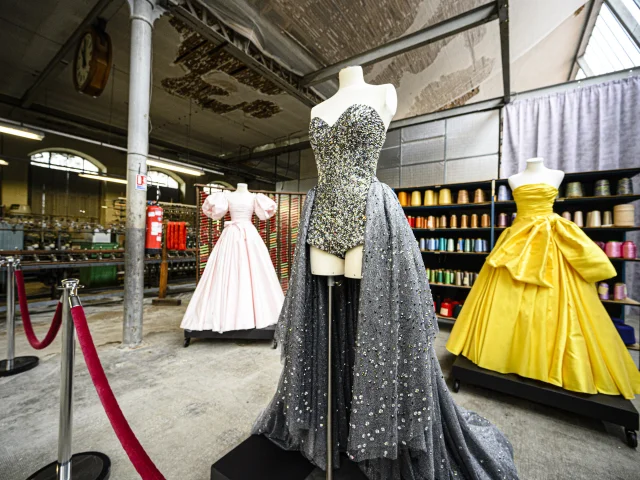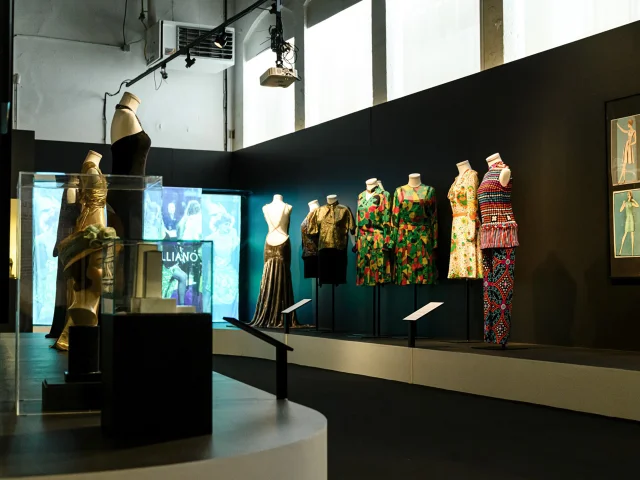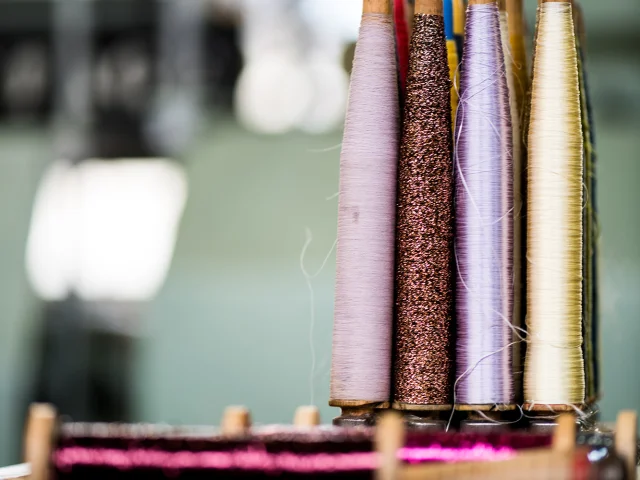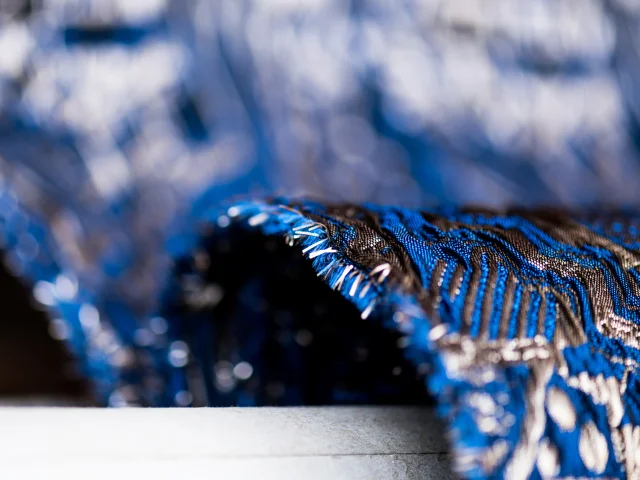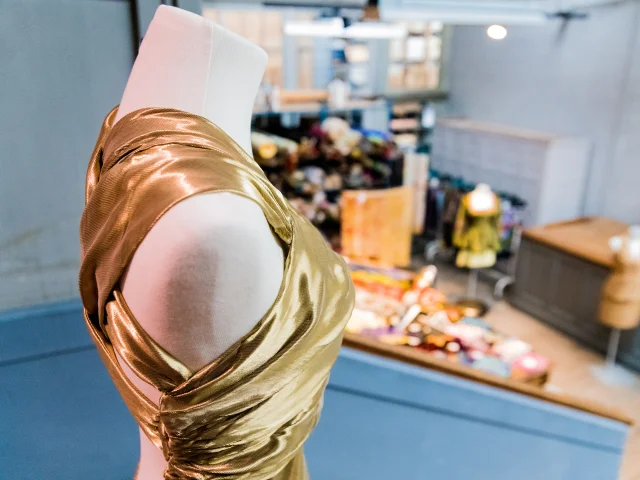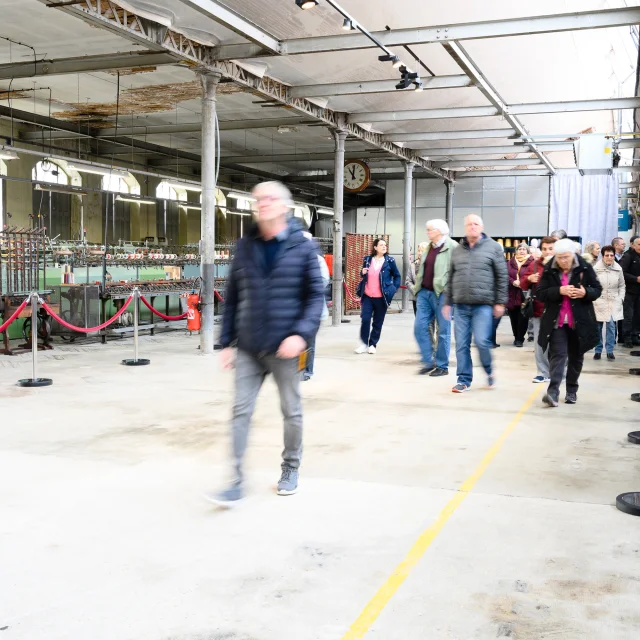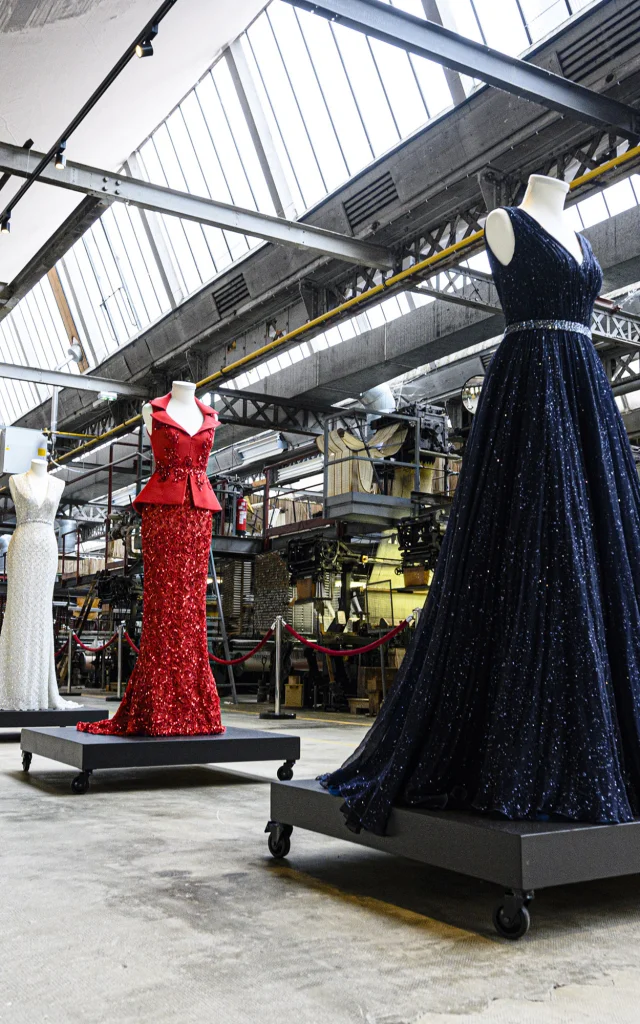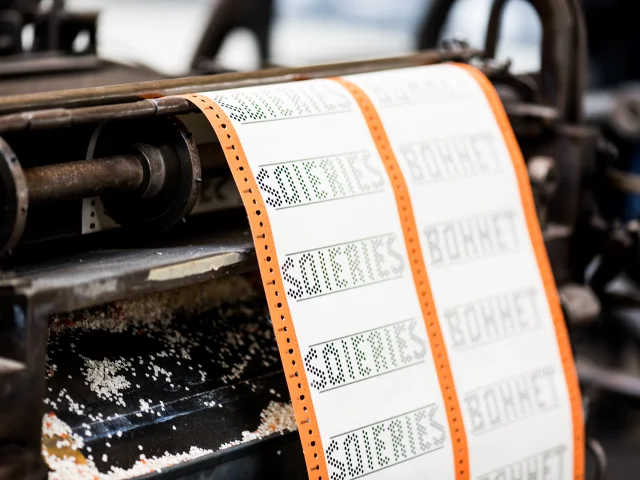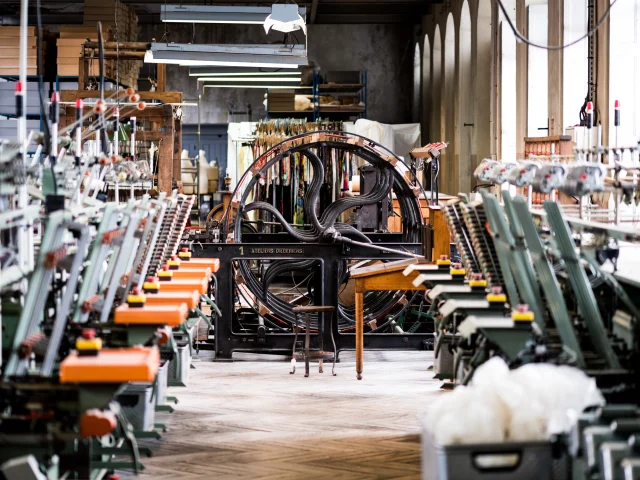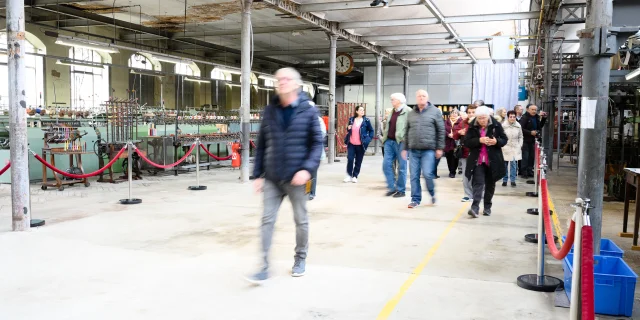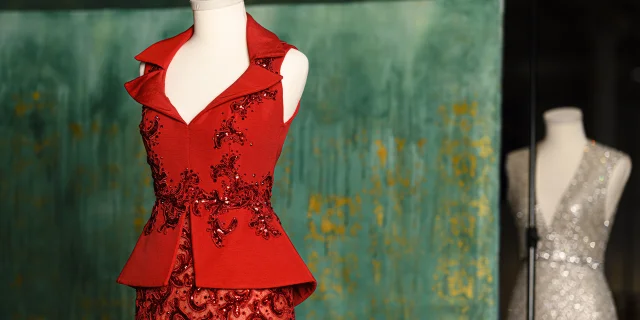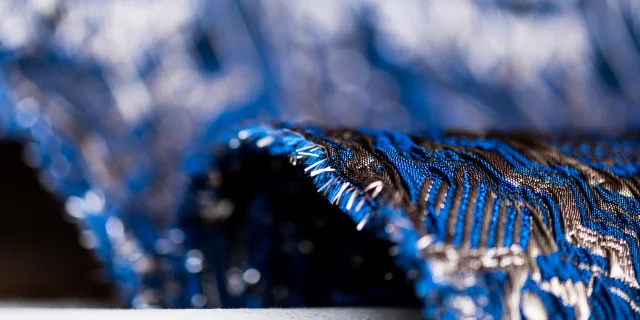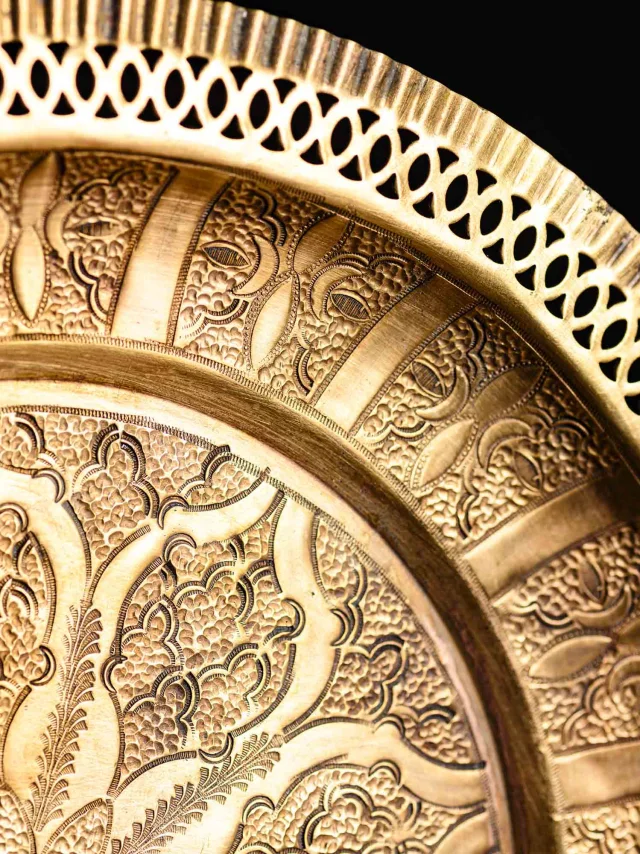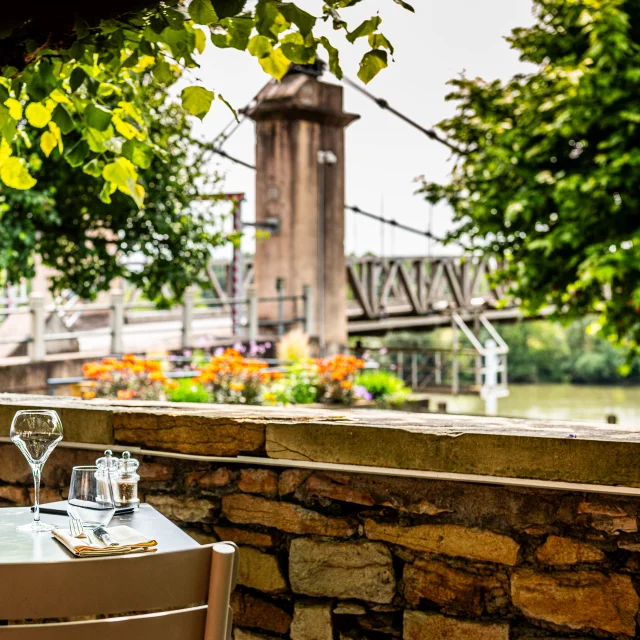The weft of silk
Close to the capital of silk and its famous Canuts, this boarding mill wove miles of delicate silks, rich taffetas, fragile muslins… sumptuous, shimmering fabrics that made fashion from the mid-19th to the early 21st century. Bonnet silks have inspired the greatest haute couture houses, from Dior to Chanel, from Yves Saint-Laurent to Lanvin, from Lacroix to Valentino…
You’ll be dazzled by the beauty and richness of the fabrics and garments on display at the museum, veritable works of art celebrating the excellence of an internationally recognized savoir-faire.
You’ll be amazed by the closed-circuit organization and complexity of the weaving looms.
